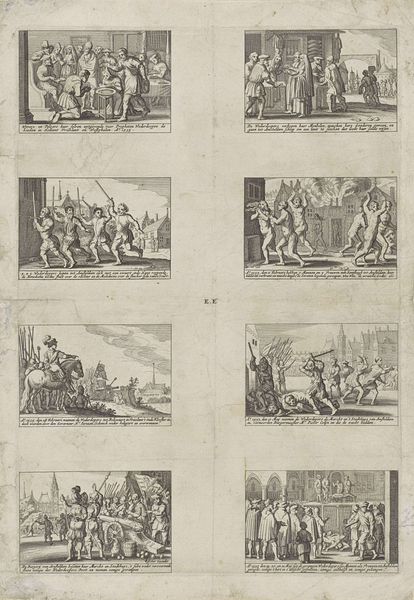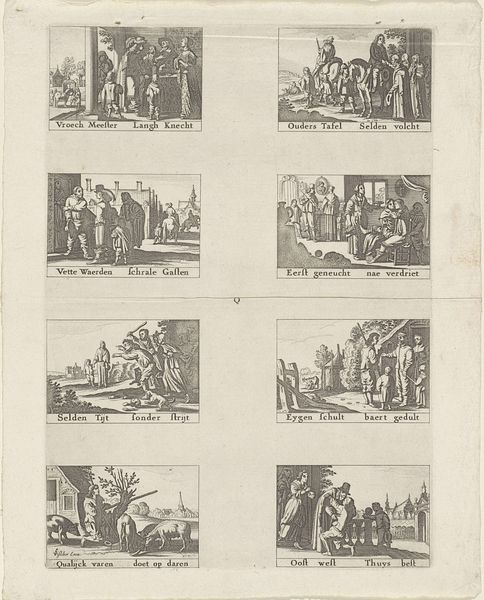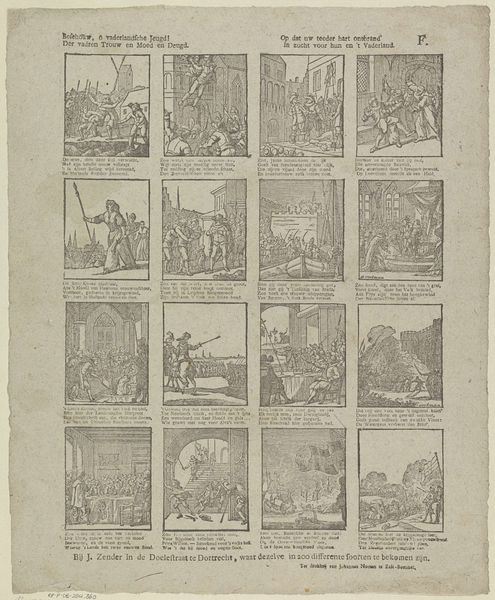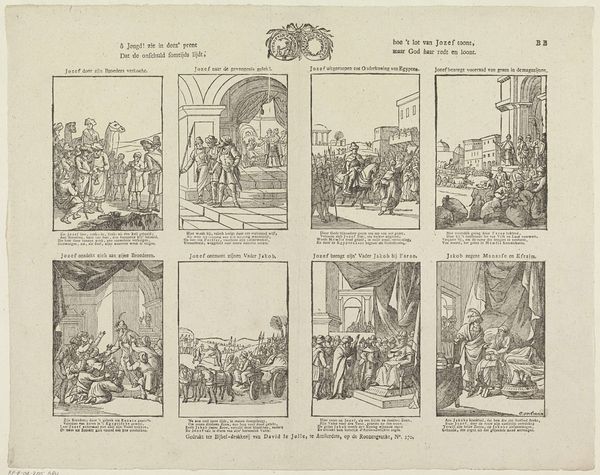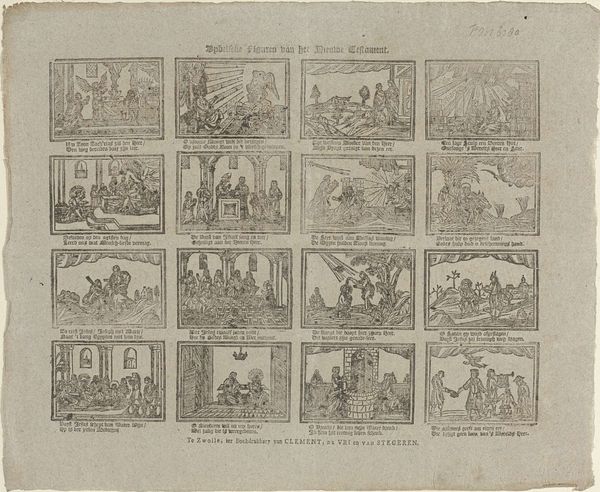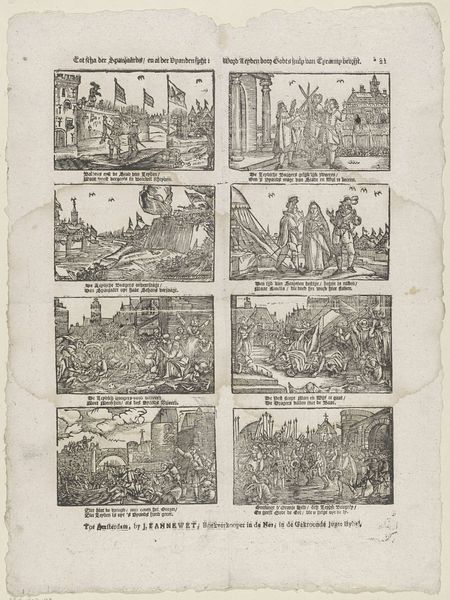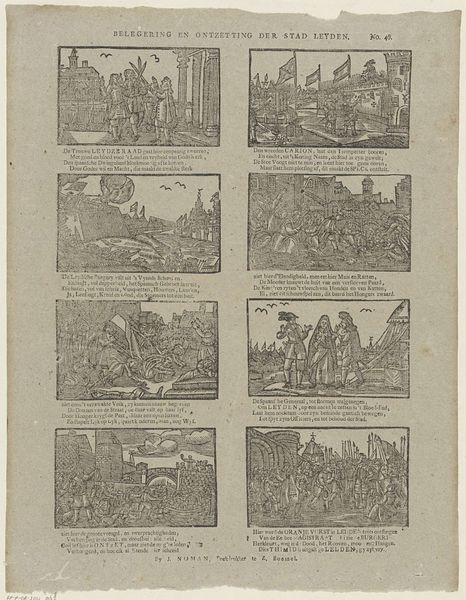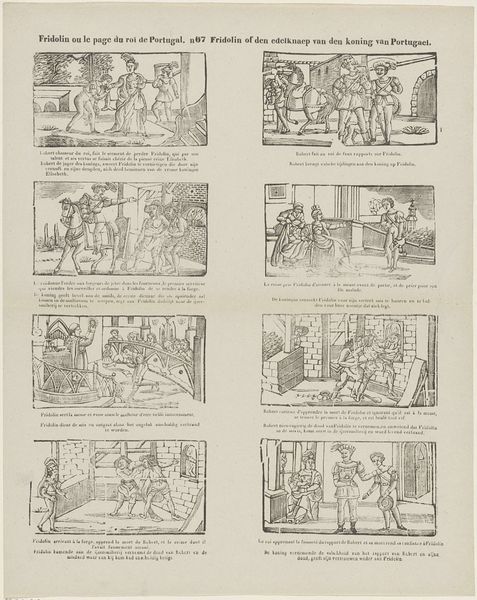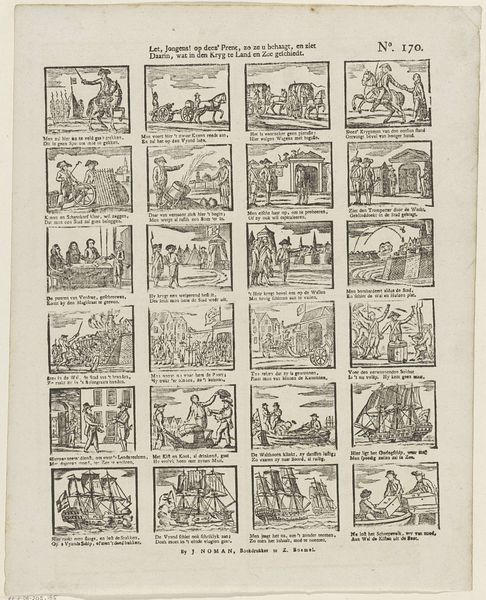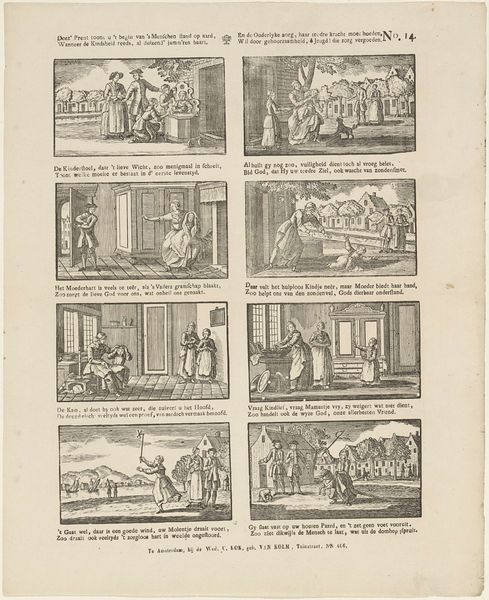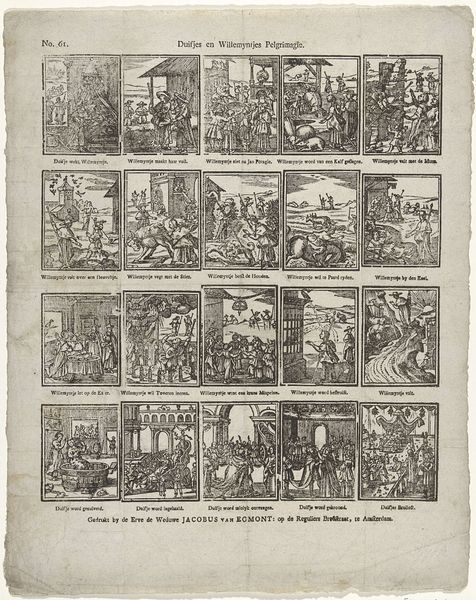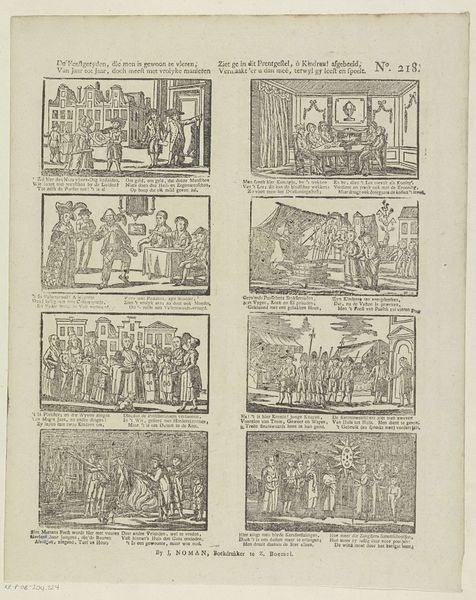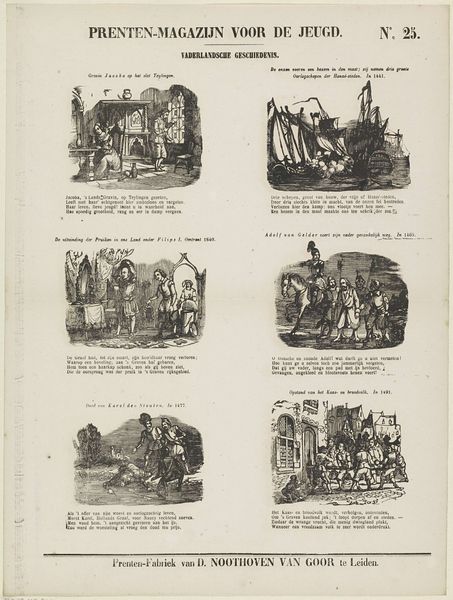
print, engraving
#
narrative-art
#
baroque
# print
#
history-painting
#
engraving
Dimensions: height 414 mm, width 327 mm, height 345 mm, width 242 mm
Copyright: Rijks Museum: Open Domain
Editor: We’re looking at *Tachtigjarige Oorlog*, or Eighty Years’ War, by Claes Jansz. Visscher, made between 1601 and 1652. It's an engraving, quite small, and composed of eight scenes depicting moments from that conflict. The overall feeling is somber, filled with violence and struggle. How do you interpret this work within its historical context? Curator: It's vital to consider this work as both a historical document and a cultural artifact deeply enmeshed in the political and religious struggles of the time. Visscher's choice to represent the Eighty Years’ War through a series of vignettes invites us to dissect the narrative. Who do you think the intended audience was and what messages might Visscher be trying to convey? Editor: I imagine the intended audience was likely those sympathetic to the Dutch cause, wanting to portray their struggle against Spanish rule as just. Maybe Visscher aimed to stir nationalistic sentiments. Curator: Precisely! Consider the symbolism embedded within each scene. Are these objective depictions, or do you detect any bias? Think about how the power dynamics of the era might be reflected in the visual choices. Notice the emphasis on violence, executions, and acts of rebellion. These images worked to solidify a collective memory of resistance against oppression and could have further fanned the flames of revolt. Editor: That makes sense. The scenes aren't just reporting events; they’re actively constructing a particular narrative. I didn’t consider how the choices around imagery could reinforce the rebellion itself. Curator: Exactly. And it shows how art during conflict becomes a powerful tool, reflecting and shaping collective identities and political movements. The Dutch revolt becomes, in Visscher's hands, an urgent narrative. Editor: I never thought about prints being such important media for spreading propaganda and shaping public opinion during the 17th century. Thank you! Curator: It shows how art shapes perspectives in really potent ways!
Comments
No comments
Be the first to comment and join the conversation on the ultimate creative platform.
